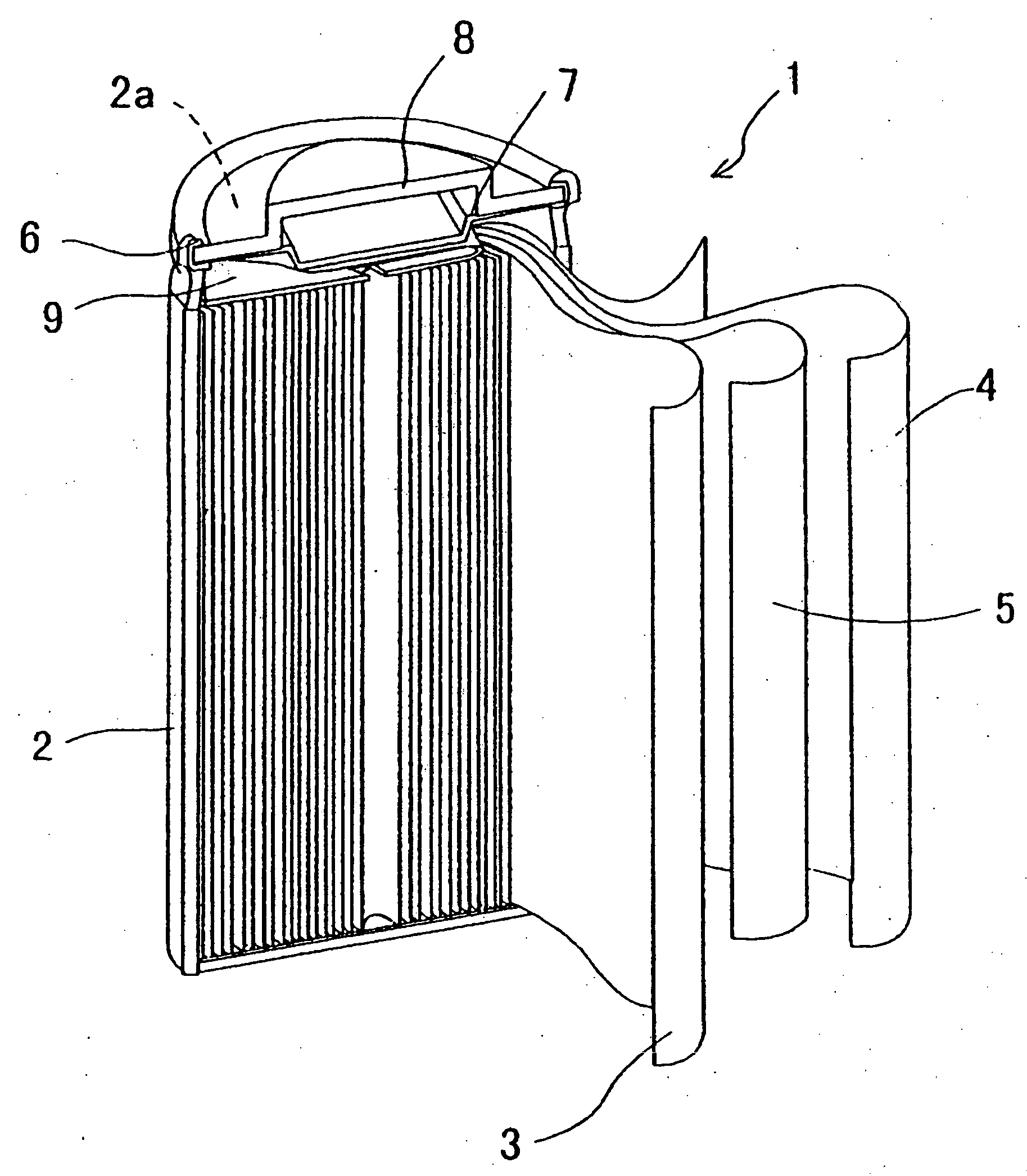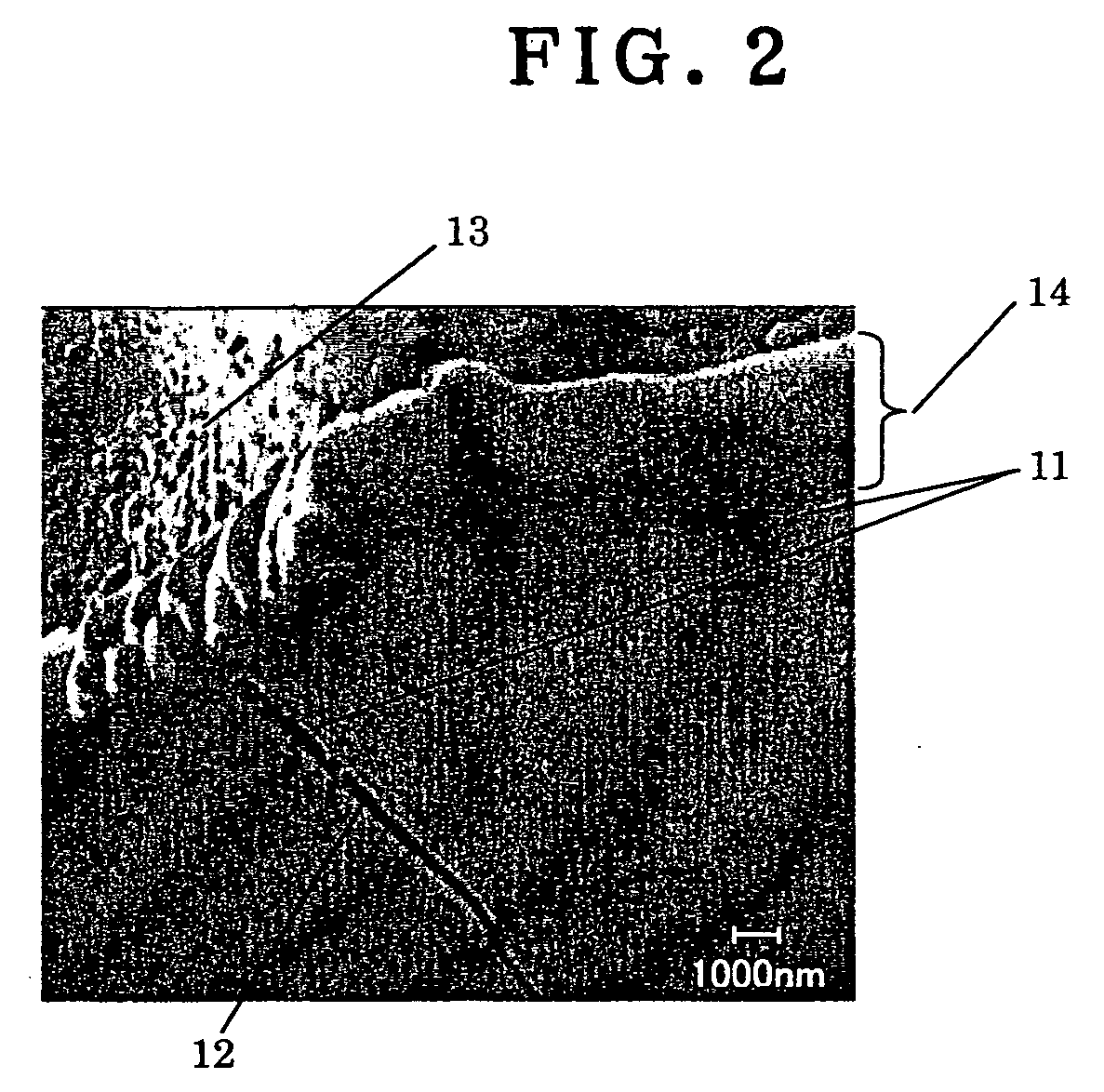Closed nickel-hydrogen storage battery and its production method
a nickel-hydrogen storage battery and closed technology, applied in the direction of nickel accumulators, cell components, sustainable manufacturing/processing, etc., can solve the problems of large thickness of ni-rich layers, cracks formed in hydrogen storage alloys, and unformed, etc., to improve high-rate discharge capability, increase service life, and excellent cycle performan
- Summary
- Abstract
- Description
- Claims
- Application Information
AI Technical Summary
Benefits of technology
Problems solved by technology
Method used
Image
Examples
examples
[0081] While the invention is now explained at great length with reference to examples, it is understood that the invention is not limited to what will be described below; testing methods, the positive electrode active material, negative electrode material, positive electrode, negative electrode, electrolyte and separator that form together a battery, battery configuration, etc. could be determined by choice.
examples 1 , 2 , 3 , 4 , 5
Examples 1, 2, 3, 4, 5
Synthesis of Nickel Hydroxide Particles
[0082] Ammonium sulfate and a caustic soda aqueous solution were added to an aqueous solution with nickel sulfate, zinc sulfate and cobalt sulfate dissolved therein in such a way that the hydroxide of each metal was at the mass ratio to be described later, thereby forming an ammine complex. While the reaction system was vigorously stirred, another caustic soda was added dropwise to it, and the reaction bath was controlled at a temperature of 45±2° C. and a pH of 12±0.2 to synthesize spherical high-density nickel hydroxide particles providing a core-layer matrix material, with the respective hydroxides being at a mass ratio of 93:5:2 for nickel, zinc and cobalt.
Provision of the Surface Layer on the Surface of the Nickel Hydroxide Particle
[0083] The aforesaid high-density nickel hydroxide particles were charged in an alkaline aqueous solution controlled by caustic soda to a pH of 12±0.2. While that solution was agitated, ...
examples 6 , 7 , 8 , 9 , 10
Examples 6, 7, 8, 9, 10
[0105] In Table 4, there are shown the necessary treating times for alloys obtained as in inventive alloy 1 with the exception that the mass saturation magnetization (emu / g in unit) was controlled by the treating time to 1.0, 2.5, 4.0, 5.0, 8.0, 9.0 and 10.0. Of these alloys, alloys of 1.0, 2.5, 4.0, 5.0, 8.0 and 9.0 in mass saturation magnetization (emu / g in unit) are called inventive alloys 6, 7, 8, 1, 9 and 10, and the corresponding batteries inventive batteries 6, 7, 8, 1, 9 and 10. Untreated alloys of 0.25 and 10.0 in mass saturation magnetization are referred to as comparative alloys 4 and 5, and the corresponding batteries as comparative batteries 4 and 5. The aforesaid method was used to measure these alloys for the thickness of the Ni-rich layer and the magnetic nickel content.
[0106] Each of those alloys was formed into a negative electrode according to the method for inventive battery 1, thereby obtaining a negative electrode-testing electrode of 32...
PUM
| Property | Measurement | Unit |
|---|---|---|
| thickness | aaaaa | aaaaa |
| temperature | aaaaa | aaaaa |
| temperature | aaaaa | aaaaa |
Abstract
Description
Claims
Application Information
 Login to View More
Login to View More - R&D
- Intellectual Property
- Life Sciences
- Materials
- Tech Scout
- Unparalleled Data Quality
- Higher Quality Content
- 60% Fewer Hallucinations
Browse by: Latest US Patents, China's latest patents, Technical Efficacy Thesaurus, Application Domain, Technology Topic, Popular Technical Reports.
© 2025 PatSnap. All rights reserved.Legal|Privacy policy|Modern Slavery Act Transparency Statement|Sitemap|About US| Contact US: help@patsnap.com



